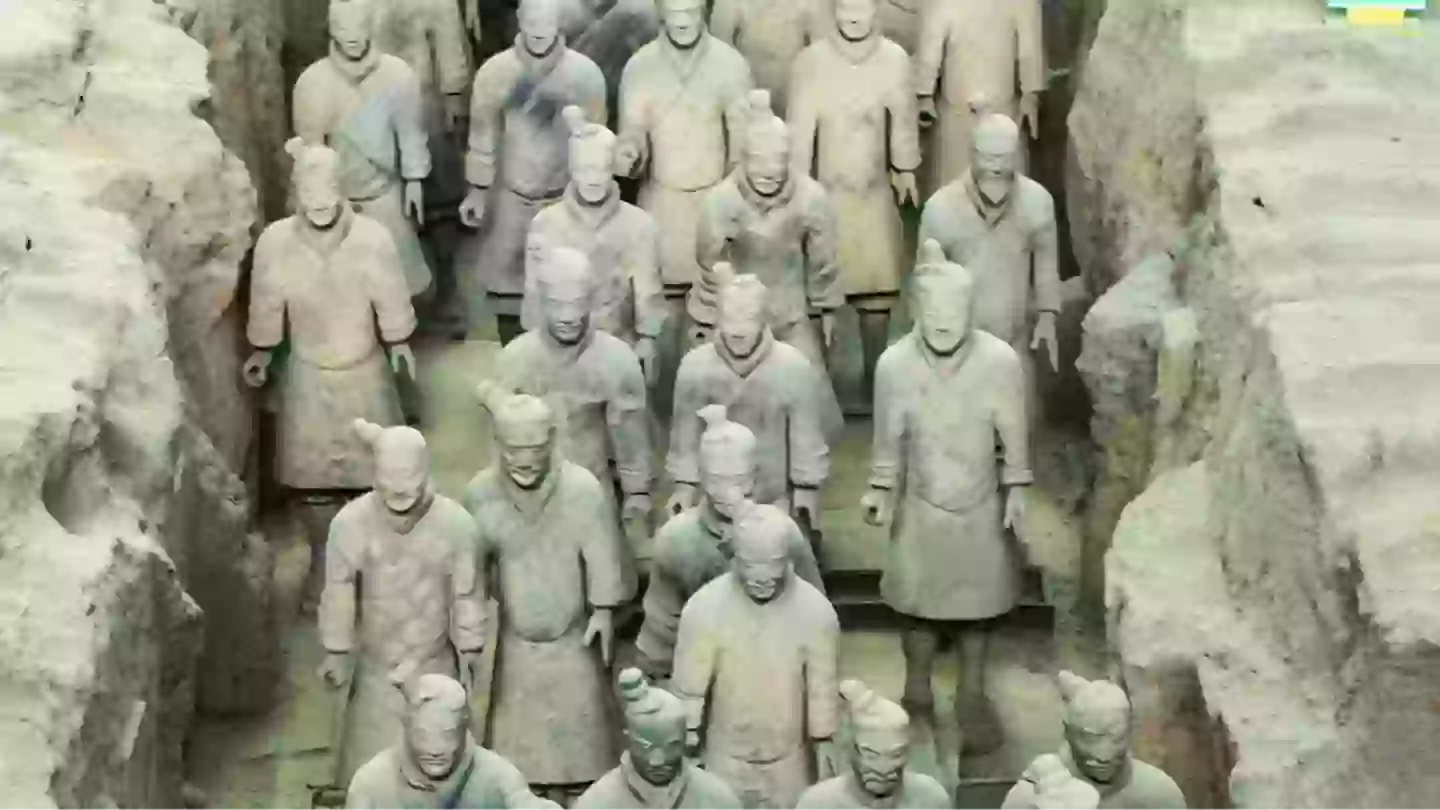The tomb of Qin Shi Huang, China’s first Emperor, remains one of archaeology’s most enigmatic discoveries, with a compelling reason for its continued closure. Over the years, many remarkable ancient sites have been uncovered, but the burial place of Qin Shi Huang holds a unique position in history.
Constructed between 246 and 208 BC over a span of 38 years, the tomb mirrors the city layout of Xianyang, the Qin dynasty’s capital, near present-day Xi’an. The tomb was first uncovered in 1974 by workers digging a well, leading to numerous successful expeditions that revealed hundreds of figures in various sections.
These figures are part of the iconic Terracotta Army, a collection of Chinese statues representing soldiers, officials, strongmen, and musicians, interred with Qin Shi Huang to accompany him in the afterlife.
The primary reason for these figures’ placement in the Emperor’s tomb was to safeguard him on his journey to the afterlife and possibly to provide entertainment. Although many of these figures have been studied, the central tomb of Qin Shi Huang has remained sealed.
The Emperor’s final resting place, established in 210 BC, lies at the heart of the mausoleum. Yet, archaeologists have chosen not to open it due to lingering uncertainties and have consistently postponed further exploration of the sarcophagus.
The concern isn’t driven by fear of curses, although the possibility of booby traps exists. Instead, the hesitation stems from a preservation challenge.
During initial excavations, the Terracotta Army was discovered with vibrant colors. However, exposure to the atmosphere caused the paint to deteriorate, leaving the statues plain. This experience has made archaeologists cautious about opening the imperial chamber, as a similar change in atmosphere could damage whatever treasures lie within.
To prevent such loss, scientists are awaiting technological advancements that would allow for the preservation of the tomb’s contents without harm. With the right technological progress, the potential grandeur of the Emperor’s burial site could be preserved for future generations.
Kristin Romey, a curator for the Terracotta Warrior exhibition at New York City’s Discovery Times Square, told Live Science: “The big hill, where the emperor is buried — nobody’s been in there. Partly it’s out of respect for the elders, but they also realise that nobody in the world right now has the technology to properly go in and excavate it.”

